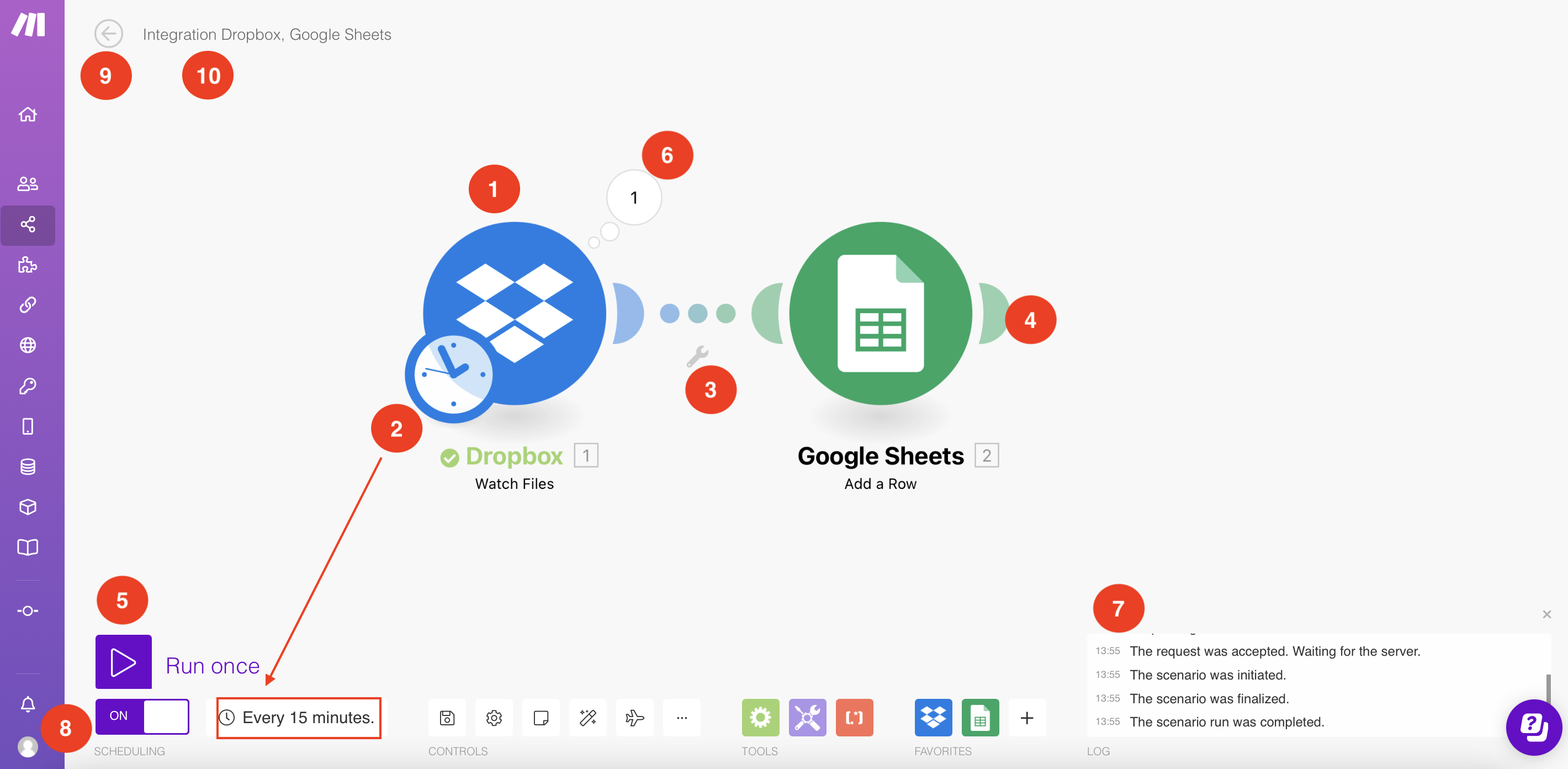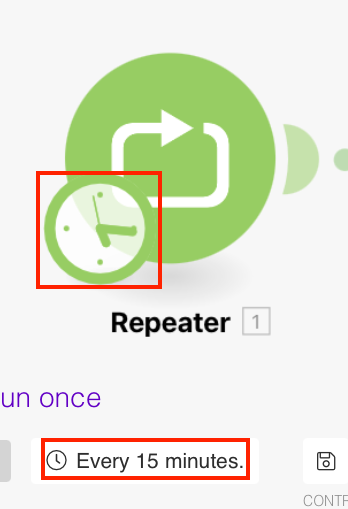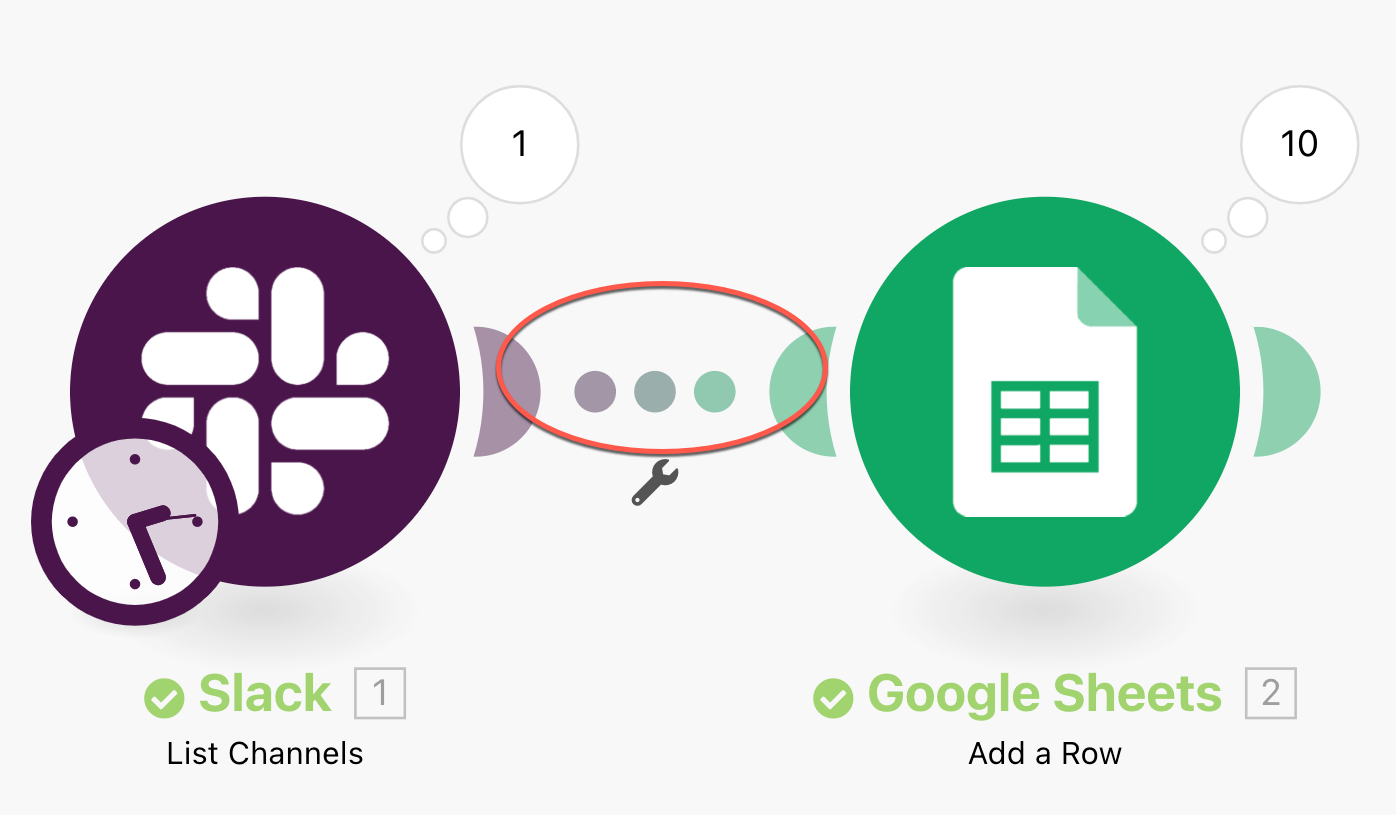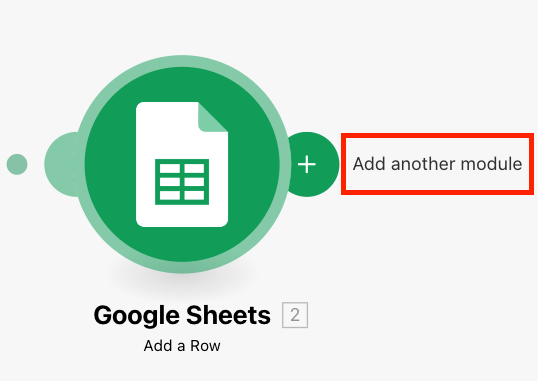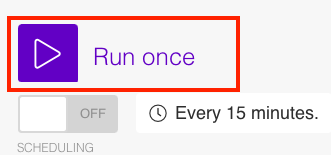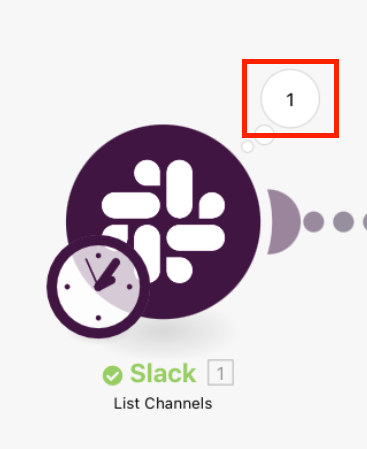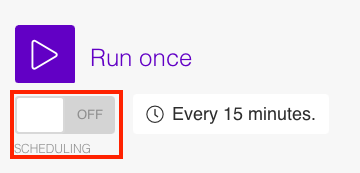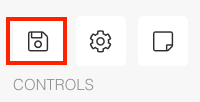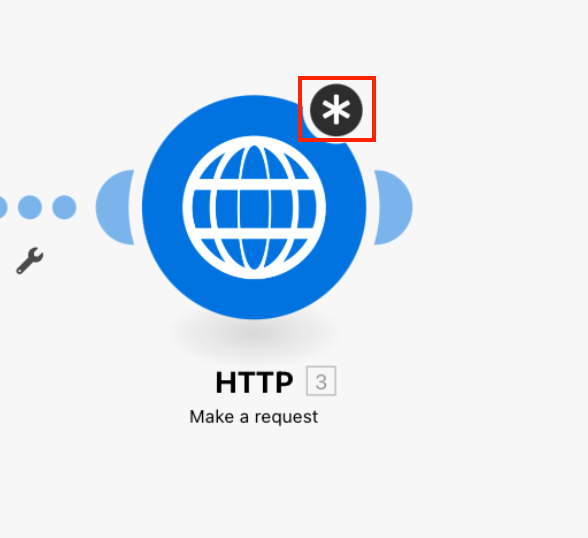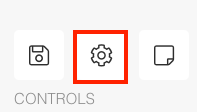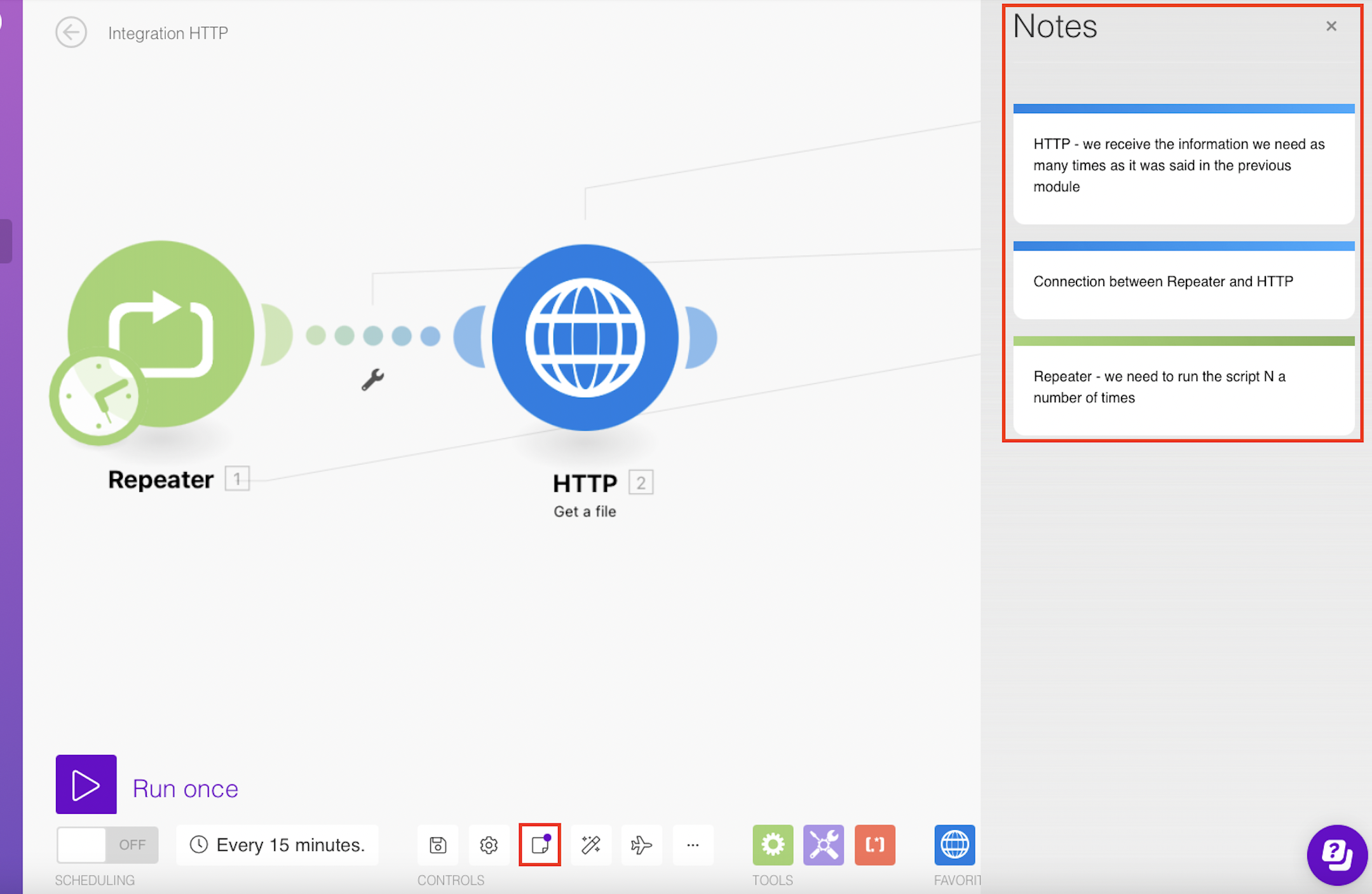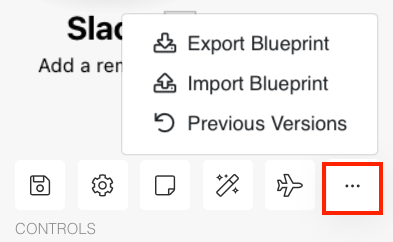Scenario editor
Modified on Wed, 29 May, 2024 at 11:32 AM
Make visual scenario editor enables you to create and edit scenarios.
Go to Scenarios and click Create a new scenario to open scenario editor.
Select Edit to edit an existing scenario, or click anywhere on the page of the existing scenario to open the scenario editor.
Below is a list and explanation of all of the elements in the scenario editor.
Modules in Make represent individual steps in your automated process. There are different types of modules.
There is no limit to the number of modules you can add to your scenario. The number of operations depends on your subscription.
In order for Make to communicate with a given app, you need to create a connection.
Depending on the module you have selected, right-click the module to open the following options:
Run this module only
Add a module
Add error handler
Rename
Close
Copy module
Add a note
Delete module
The schedule settings panel lets you adjust the running schedule of your scenario. By default, a scenario runs every 15 minutes. This panel allows you to customize the frequency and timing of your scenario. Click the clock to schedule a scenario. You can also access schedule settings via the toolbar by clicking the Schedule settings.
The clock represents a scheduled trigger, the starting point of your scenario. A scenario can also start with an instant trigger, which is visually represented as lightning ( ). Learn about different types of triggers.
). Learn about different types of triggers.
A route is a connection between two modules, visually represented as a dotted line.
Click the wrench ( ) below the route connecting two modules to display the following options:
) below the route connecting two modules to display the following options:
Set up a filter - Filters bundles according to specific criteria. You can also access this option by clicking the route connecting two modules.
Unlink - When you unlink a module, it will not be executed, unless it is a trigger.
Add a router
Add a module
Add a note
To add a module, hover over the right handle of a module until the plus sign appears. Click the plus sign to create an empty module. A menu with a list of app/services appears, allowing you to add another module to your scenario.
To remove a module, right-click the module you want to delete and select Delete module.
Once you configure your scenario, click Run once to test your scenario. After your scenario executes, you can see the number of operations, as well as more details in the log.
An operation is a task performed by a module. Once the scenario is executed, Make displays the number of operations performed by each module in the white bubble on the top-right of each module. Click the bubble to inspect the results of the module's operation.
Make charges you according to the total number of operations performed by the modules in your scenario. For more information, check how to count the number of operations.
The log records every event that occurs during a single run of a scenario and records it for the scenario execution history. The log contains information about each step and any errors encountered during the execution of the scenario.
If everything works properly, you can activate the scenario. Select ON to activate your scenario or OFF to deactivate the scenario.
Learn about the difference between active and inactive scenarios.
If your scenario does not run as expected, check our error handling section.
Click the left arrow in the top-left corner to close the scenario editor and return to the scenario detail page.
To rename a scenario, click the scenario name in the top left corner and edit as desired. Press Enter or click outside the edited field to save the scenario under a new name, and click the save icon ( ) to save the new name.
) to save the new name.
In this section, you can find more information about Controls, Tools, and Favorites.
When you finish editing a scenario, click the save icon ( ) to save the current scenario settings.
) to save the current scenario settings.
Important
A scenario does not save automatically. If you do not save the scenario and exit it, a pop-up window appears prompting you to save your changes. If module settings are not saved, an asterisk ( ) displays on top of the module, until you press Cancel to discard or OK to save your changes in module settings.
) displays on top of the module, until you press Cancel to discard or OK to save your changes in module settings.
Click the gear to open the scenario settings.
To add a new note to the module or route (the connection between two modules), right-click the module or click the route you want to add a note to and select Add a note.
Write your note in the allocated space. You can add an unlimited number of notes.
Click the page icon to show or hide notes that have been added to modules in your scenario.
Important
This action is not reversible unless you save the scenario before using this function.
Make gives you the possibility to create highly sophisticated scenarios with many modules.
Click the magic wand to adjust the overall layout of the modules in the scenario so you can see them aligned.
Note
If you have a router in the scenario, the Auto-align feature arranges modules according to the order you set for all routes.
Click the airplane before running the scenario to see your data flow between modules.
Click the three dots to open the following menu:
Export Blueprint - Allows you to save the scenario blueprint in the JSON format to your computer.
Import Blueprint - Allows you to load the scenario blueprint in the JSON format from your computer.
Previous Versions - Allows you to restore a previous version of the scenario. Learn how to restore a previous scenario version.
Tools section includes:
Favorites section lists your most commonly used apps for easy access. The list grows as you add more apps to your scenario. You can also add apps directly to the list by clicking the plus.
Was this article helpful?
That’s Great!
Thank you for your feedback
Sorry! We couldn't be helpful
Thank you for your feedback
Feedback sent
We appreciate your effort and will try to fix the article

